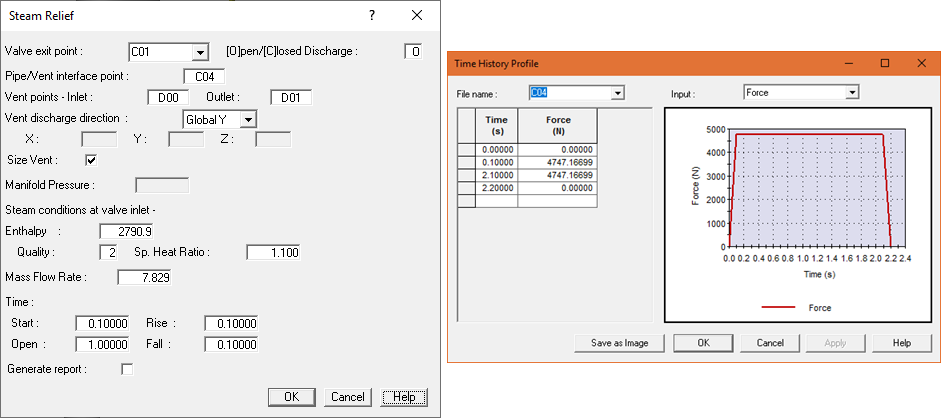Safety valve tripping is one of the most common transient flow phenomena that the stress analyst has to deal with.
The most widely used method, in the case of steam, to determine the reaction forces in the pipe is to follow Appendix II of ASME B31.1.
AutoPIPE integrates the ASME B31.1 formulas and prepares the force profile for the valve and discharge. Forces in discharge pipe direction changes, whether open or closed discharge, can be calculated using AutoPIPE's fluid transient calculation.
The AutoPIPE Dialog for Calculating Safety Valve Discharge by Time History requires the following data:
With these data the program prepares the histogram of the safety valve trip.
